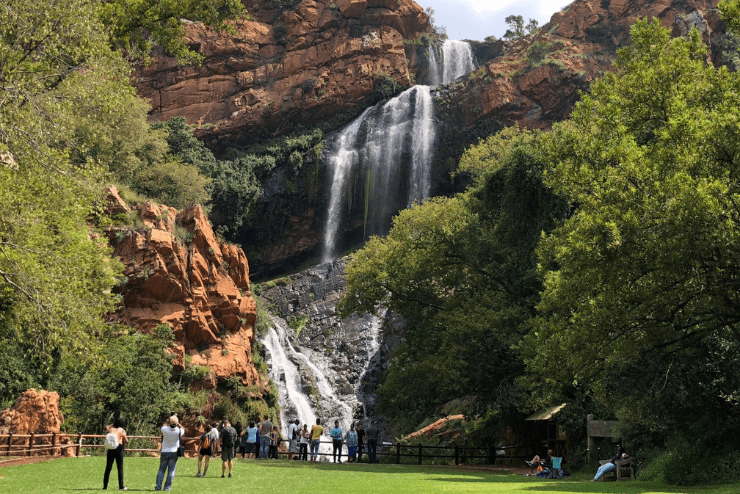How Johannesburg North Attractions can Save You Time, Stress, and Money.
How Johannesburg North Attractions can Save You Time, Stress, and Money.
Blog Article
Not known Details About Johannesburg North Attractions
Table of ContentsSome Known Questions About Johannesburg North Attractions.An Unbiased View of Johannesburg North AttractionsSee This Report about Johannesburg North AttractionsSome Of Johannesburg North AttractionsThe Greatest Guide To Johannesburg North AttractionsThe smart Trick of Johannesburg North Attractions That Nobody is Talking About
The city grew on the edge of the Witwatersrand Main Coral reef, a below ground stratum of gold-bearing quartz-silica conglomerate that arcs for hundreds of miles beneath the Highveld - Johannesburg North attractions. Many of the gold mines in the city ceased operation in the 1970s, but in its day the Witwatersrand gold industry accounted for even more than 40 percent of the world's yearly gold production.Johannesburg has a pleasant environment. Summertime temperature levels balance about 75 F (24 C); winter months temperature levels balance about 55 F (13 C) and just occasionally dip below cold. The city enjoys about eight hours of sunlight each day in both winter and summer season. Rainfall standards about 28 inches (700 millimetres) per annum, yet the total varies considerably from year to year.
What rain the city obtains drops nearly specifically in the summertime months, typically in spectacular late-afternoon electrical tornados., where numerous homeowners still count on coal for fuel.

The 5-Minute Rule for Johannesburg North Attractions
The equilibrium of the city is occupied by whites. Holiday accommodation varies in personality and top quality.
Physical growth, although rather restricted by transportation, proceeded rapidly as migration to South Africa, and Johannesburg specifically, increased substantially. This problem was fixed in the 1930s when the car was presented in automation to South Africa. Cars were, for the many part, constrained to the rich, and allowed them to relocate to the north of the city and commute into the centre.
Most bad residential areas were combined, with inadequate blacks and whites cohabiting, although the well-off suburban areas were generally scheduled for whites. This changed with the political election of the National Party in the 1948 elections, that began to formalise the system recognized as apartheid. Racism formally marked which residential areas each race could stay in under the Team Areas Act.
The previous system of eleven phoned number regions was reorganised in 2006. Marshalltown, as seen from the top of the Carlton Centre. The M1 and M2 run behind the buildings, and the southerly residential areas prolong past the highway limit. The central city of Johannesburg is situated within the city's Area F. The number of people living in the internal city on an informal basis is unknown, as many are unlawful immigrants. The joblessness, the original source education, and age profiles of the area are all unknown, due to the difficulty of obtaining trustworthy details about the area.
Johannesburg North Attractions Can Be Fun For Anyone
Yeoville and Bellevue have a mix of house structures and single residential devices on small great deals. The area lies on a hilly divide that ranges from eastern to west. One of the most noticeable geographic feature is Observatory Ridge, which is named for the large observatory situated on it. The leisure areas are no more made use of, because of protection issues.

Johannesburg Stadium, a training school for both the Golden Lions and Orlando Pirates, is surrounding. The eastern residential areas of Johannesburg lie in the city's 7th [] and 9th [] areas. The location is likewise functionally incorporated with East Rand border towns outside of the main limit of Johannesburg, such as Bedfordview and Edenvale (both component of Ekurhuleni Metropolitan Community).
See This Report about Johannesburg North Attractions
The eastern residential areas are some of the earliest areas of Johannesburg, there are large communities of Jewish and various other European backgrounds, the majority of the populace is English speaking. There are 3 golf courses as check this well as a number of protected ridges with viewsites.
The area is mostly composed of old "matchbox" residences, or four-room homes built by the government, that were developed to give low-cost lodging for black employees during racism. Soweto is an abbreviation, standing for "South Western Townships". Road after street in this location is lined with matchboxes; however, there are a few smaller locations where flourishing Sowetans have actually built residences that are more comparable in stature with those in even more wealthy residential areas.
Hostels are one more noticeable physical function of Soweto. Initially built to house male migrant workers, several have been enhanced as residences for couples and households. The N1 Western Bypass skirts the eastern limit of Soweto. The residential area was not traditionally allowed to create employment centres within the area, so virtually all of its citizens are travelers to various other parts of the city.
Get This Report about Johannesburg North Attractions
The domestic areas in the northern suburban areas are mostly official, with no substantial areas of informal real estate, or real estate that does not have a permanent framework. This is a recognized location, there is a fad of land use change from household to business, especially along primary arterial roadways and around well-known nodes.
Roadways to the east and west are much less well developed, as there are no freeways taking a trip in read what he said that instructions. Towards the northern border of the city, the density of development reduces, leaving huge areas of primitive land around Midrand.
Top Guidelines Of Johannesburg North Attractions
, which is located on a hillside forgeting the internal city and Hillbrow.
Report this page